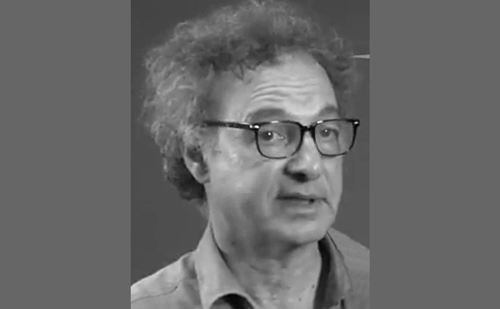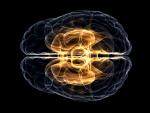Since the end of World War II, the strictly medical management of and rehabilitative interventions for persons with various disabilities (including those following stroke and head trauma) have been supplemented by various paramedical remedial or functionally enhancing services (e.g. physical and occupational therapies, speech therapy, and psychological and vocational counseling). However, such interventions (which have come to be accepted as part of conventional rehabilitation programs) have been useful primarily in the case of the more severely impaired and functionally incapacitated individuals who do not require custodial care. Such services, however, have proved to be inadequate in the case of brain-injured individuals with milder forms of cognitive or functional impairments that, nevertheless, prevent the ‘smooth’ reintegration of these individuals with their families or their return to work.
The failure of the amalgam of conventional rehabilitative approaches to adequately accommodate the needs of so-called minimally or mildly brain-injured persons prompted serious examination of the premises and theoretical considerations on which the various physical, neurocognitive, and neurobehavioral rehabilitative practices were based. Such examinations were accompanied by numerous clinical research studies that were aimed at establishing the efficacy, external validation, and theoretical plausibility of specific remedial techniques employed by rehabilitation professionals. There was much skepticism as to whether anything could be done to help individuals with brain damage once neurons were destroyed or damaged. Much of the research activities from the 1950s through the 1970s were driven by the desire to formulate empirically based therapies, strategies, and measurements in a search to develop evidence for the efficacy and usefulness of neuropsychological rehabilitation. By the early 1970s, some students of the field1,2 concluded that Kurt Goldstein’s ‘organismic’ theory of human nature3,4 provided a conceptual foundation for a framework for neuropsychological rehabilitation. Goldstein applied his ideas in actual rehabilitative work with brain-injured war veterans of World War I.5 Similarly, based on neuroatomical and neurophysiological studies on animals, others, such as Moore6 and Bach-y-Rita,7 offered a rationale for rehabilitative interventions for people with acquired brain injuries.
In three seminal papers, Goldstein8–10 articulated his key ideas concerning the rehabilitation of brain-injured persons. These ideas were later operationalized and systematically implemented in a two-year pilot study with Israeli brain-injured war veterans.11 Subsequently, based on a five-year US government-funded clinical research project, an intensive day program for post-acute neuropsychological rehabilitation of brain-injured persons was established at the New York University (NYU) Medical Center’s Rusk Institute.12–15 The NYU program has been acknowledged as the model for similar (holistic) programs and variations of holistic programs now in existence in 11 countries.16 Goldstein’s core ideas provided an alternative to conventional approaches to post-acute neuropsychological management and rehabilitation. They are briefly summarized in the following sections.
Diagnostic Considerations
An observed failure to function normally after a brain injury should be viewed as the consequence of a combination of (or the interactions among) biological and behavioral causes. The biological cause is a brain lesion (or a dysfunctioning due to neurophysiological or neurochemical alterations following the injury). The behavioral causes for impaired functioning may be linked to two factors. The disuse by the injured individual of some still intact capacities is an ‘organismic defense’ against the experience of a catastrophic reaction. “For, although in principle the person could still use those undamaged capacities, [the patient] will not use [them to avoid a] catastrophe.”9
The disuse of still intact abilities is not a conscious phenomenon. By using the word ‘defense,’ Goldstein emphasized that he did not subscribe to the psychoanalytical notions of ‘defense mechanisms’; rather, the disuse of still intact abilities is an innate protective mechanism, which “in the brain-impaired person occurs passively (i.e. automatically) through organismic adjustment.”8 A corollary to the disuse of intact abilities is when the patient is actually in a state of a major, or minor, form of catastrophic response, which Goldstein9 described as a symptom of “disordered functioning of the whole organism, which shows all the characteristics of severe anxiety.”
Goldstein10 postulated a second important diagnostic consideration: “One of the most significant [diagnostic] postulates is [to] never consider a symptom simply from the aspect of its appearance… Patients feel forced to react to [the demands of a situation] because they are always in danger of coming into a state of anxiety, [so they react] without hesitation [without being aware of the fact] that the solution is not correct.”
The authors have frequently observed ‘novices’ in neuropsychological assessment arriving at faulty neurodiagnostic conclusions in persons with pronounced frontal lobe dysinhibition syndromes. In one case, the person’s rash, poorly modulated, and inadequately self-monitored statements led the examiner to conclude that the patient was “unable to empathize” with others. In another case, on the basis of written statements containing grammatical and syntactic errors, the examiner diagnosed “the presence of aphasic problems.” In a third case, failure to adequately perform the Wechsler Adult Intelligence Scale III block design tests led to the conclusion that the patient’s “constructional praxis” was impaired. An early study17 demonstrated that failure in performing a task in brain-damaged people is not qualitatively different from failure in non-brain-damaged people. The failure is related to the continuum of the level of complexity of the task. A brain-damaged person may experience complexity at a simpler level of task demand than a non-brain-damaged person. Goldstein also postulated: “In the interpretation of symptoms, it is of the greatest importance to be aware that the [patient], like normal [individuals], is driven by the [inherent nature of human beings] to realize his capacities as much as possible.”10
Considerations for Treatment
A basic assumption by Goldstein is that when it is impossible to restore an organism to its full (pre-injury) integrity, a state of ‘health’ can be established if the patient’s environment is so organized and structured by others that the patient can cope with the situational demands that confront him or her. Under such conditions, the likelihood of catastrophic reactions will be significantly reduced. Thus, an ordered (and structured) environment will enable the patient to cope. The ability to cope (based on an inherent characteristic of human nature) “will lead the patient to feel healthy.”9 However, “becoming healthy demands a transformation of the individual’s personality” to enable the person to bear restrictions that will inevitably result from having to live in an environment that is organized and structured by others. Therefore, only by accepting such restrictions can the person feel that “life remains worth living in spite of restrictions.”9 “The central aim of therapy” in a rehabilitation context is to help the brain-injured person to accept restrictions, i.e. limitations, with equanimity and “to make the right choices,” since only this will help the patient “feel that life is worth living.”10 It is therefore “our task in therapy to help the patient to realize the necessity of [accepting] restrictions [in order to become] healthy.”9 Because both the cognitive and emotional functions of the brain-injured person are impaired, “a particular [task of the rehabilitation process] consists of making the patient understand the problem (i.e. his/her deficits and their functional consequences) as much as possible in all of its details”9 without precipitating a catastrophic reaction. While planning what to tackle, remedially and therapeutically, in brain-injured persons, “we have to decide… which symptoms can be eliminated and which should remain undisturbed” (i.e. which should be left alone and not treated).9 Finally, it will be necessary “to evaluate and to choose from among the different therapeutic approaches [those techniques that are particularly suited to the needs and capacities of brain-injured persons, which will have to be different from the practices of other schools of psychotherapy particularly that of psychoanalysis]. Therapy will be successful only if the patient and the therapist interact in a kind of communion between them.”9
Although typical programs focus on the development of sets of skills, in a holistic program the development of skills is seen as part of a larger process. In this process, the teaching style and the calibration (for level of complexity) of the tasks that will have to be performed as part of the remedial training are adjusted to induce a feeling of safety and to avoid precipitating anxiety and defensive behaviors. The therapeutic milieu therefore makes possible an educational process that draws upon the realization of strengths and an awareness of one’s limitations. The emphasis is on minimizing as much as possible potentially demoralizing factors while enhancing the acquisition of skills that will enable the brain-injured individual to become productive commensurate with his or her current abilities. The holistic approach is therefore a balancing act between the areas that are singled out for treatment, the nature of the tasks presented to the patient, and the judicious clinical management of the patient who may be hovering between depression and denial. In this context, it is crucial to deal with limitation in the patient’s attention, memory, and reasoning functions and to take into account the dynamics of the patient’s family roles and the concrete vocational choices that the patient could realistically pursue.
The structural, organizational, and programmatic details of the ‘therapeutic community’ type of day program that makes possible the effective application of Goldstein’s ideas were published by Daniels-Zide and Ben- Yishay.18 Evidence concerning the most effective treatment mix,19 as well as showing that this type of program yields superior outcomes to conventional approaches, in terms of returning brain-injured individuals to work20 and in reconstituting their shattered sense of identity21 has been published elsewhere. Although much has been learned, more is required to address the full range of questions concerning the efficacy and empirical validity of the approach. Although there is a need for more adequate research, at this stage of our knowledge the holistic approach is cited as part of best practices in recent reviews of the literature.22,23 ■












